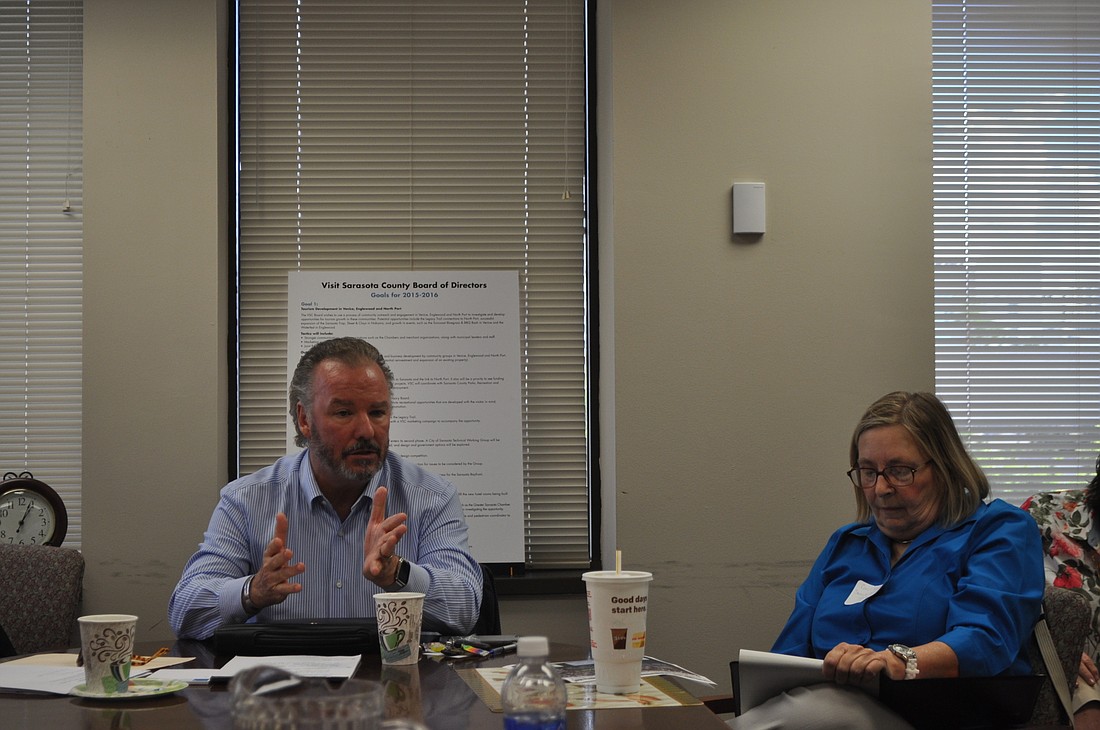- December 18, 2025
-
-
Loading

Loading

Candace Damon was hired to help Sarasota Bayfront 20:20 plan the future of 42 acres of city-owned land, but she still isn’t sure how those plans will come to fruition.
That’s because Damon, vice chairman of New York-based consulting firm HR&A Advisors, maintains the community will determine the best course of action.
“There’s lots of precedents for doing this across the country,” Damon said. “There is no single right answer. The right answer for Sarasota is going to come from thinking hard and talking with Sarasotans.”
Since its inception in early 2014, Sarasota Bayfront 20:20 has focused on maintaining its status as an independent grassroots endeavor. Headed by Visit Sarasota County Chairman Michael Klauber, the group is working to create an open public space and a campus for arts organizations on the bayfront land surrounding the Van Wezel Performing Arts Hall.
After spending last season developing a list of community principles to dictate how the land is developed, Bayfront 20:20 has mostly taken an internal focus since the beginning of the summer. City staff produced a technical analysis of the conditions of the land in September, outlining logistical and environmental concerns to consider when planning begins in earnest.
The Van Wezel and the Sarasota Orchestra have been master planning to determine their future needs, a subject scheduled for discussion at a November Bayfront 20:20 meeting. The end of that effort marks the beginning of the work that people tend to wonder most about: How does this go from a theoretical exercise to a physical project?
Already, Bayfront 20:20 is increasing its public engagement. Last week, the group held four focus group sessions designed to get resident feedback on the future of the planning effort.
“I think there was a lot of excitement about what’s been accomplished to date, and a very positive impatience about moving forward and doing something,” Damon said.
Klauber opened the sessions by sharing the group’s new goal: to break ground on a project within the next two years.
“We need a demonstration that the vision we’re setting forth can be realized in relatively short order,” Klauber said.
Of course, there’s no idea of what that groundbreaking might be for. Damon has spoken to the need for an “early victory” — that although the groundbreaking would be followed by many years of work, it’s an important signifier for the community that it’s producing tangible results.
In one focus group, a participant focused on a key question: When do you know what goes where?
Damon was reluctant to delve into specifics, but eventually, she outlined one potential scenario for the future of the bayfront. Once the Van Wezel and Sarasota Orchestra finish their planning efforts, they might develop a series of options for ways they can collaborate with other cultural organizations.
At that point, the yet-to-be-determined mechanism for site planning can move forward. The trick is balancing the needs of arts organizations, the public open space and other logistical aspects, such as parking, she said.
From there, site planning can begin — at which point there should be an examination of the project budget and funding options. If all goes right, Damon said, the site plan could be completed within the next 12 to 18 months.
"We need a demonstration that the vision we’re setting forth can be realized in relatively short order." — Michael Klauber
“Bayfront 20:20” might not be the right group to lead each step of this endeavor, Damon pointed out. For the immediate future, then, the group is focusing on finding the appropriate entity to manage the planning and design process, the community outreach process and, eventually, the operational management of the final product on the bayfront.
Whatever those entities look like, Bayfront 20:20 wants to maintain the same level of community engagement it’s seen in its first 18 months. For now, the focus might remain on procedural issues, but soon, the group’s leaders believe it will finally move to meatier subjects.
“I think it’s critically important to keeping this coalition together that it participate in the decision making — not just about substance, but about process,” Damon said.